What Causes Forefoot Pain?
If you have ever felt a dull ache pain or a burning sensation around the ball of your foot, you might wonder what is causing the pain and how you can treat it.
In this blog, we will outline what metatarsalgia is, common associated symptoms, causes for the pain and best treatment options.
Metatarsalgia (forefoot pain) is a general term for pain felt around the ball of the foot when weight-bearing. A common source of metatarsalgia is irritation of a fibrocartilage plate that sits underneath the joint where a metatarsal meets a toe in the ball of the foot. Sometimes forefoot pain is caused by inflammation or enlargement of the sheath surrounding the nerve that sits between the bones in your forefoot; this type of pain is called Morton’s neuroma. Neuromas usually appear at the ball of the foot in between the 3rd and 4th toes. Although metatarsalgia and neuroma both occur in the forefoot, not everyone with metatarsalgia has neuroma.
READ MORE: Managing foot pain
Causes of Forefoot Pain
Forefoot pain can be caused by several different conditions. Common causes include:
1. Foot mechanics
Normal feet have an arch across the ball of the foot called the metatarsal (or transverse) arch. When this arch falls it places additional pressure on the middle three bones. This fallen arch can also cause these bones to be squeezed together, pinching the soft tissues (nerves and tendons) that are in between and surrounding the bones.
2. Footwear
Footwear plays an important role. High-heeled shoes place additional weight on the ball of the foot and narrow pointed shoes squeeze the toes together. Tight fitting shoes in the toe-box can also aggravate forefoot pain by compressing soft tissue and restricting blood and nerve supply.
3. Rigid High Arch Feet
With higher and less flexible feet less of your foot is in contact with the ground that in turn increases pressure on your forefoot and heel. This foot type can be prone to metatarsalgia and neuroma.
4. Short Big Toe
Some individuals have shorter than average Big Toes (or more specifically a short 1st metatarsal) that transfer load to the second toe to compensate for the reduced leverage of the Big Toe.
5. Soft Tissue and Muscular Factors
As we age, much of the protective fat pad under the ball of the foot is lost. Weak foot muscles can cause the transverse (metatarsal) arch to collapse. Tight calf muscles promote early heel lift during walking. This places more stress on your forefoot. Weight gain also increases the stress on the ball of the foot.
Symptoms
Metatarsalgia pain usually appears as a dull ache or burning sensation around the ball of the foot. Some people describe the pain as feeling like you are walking on pebbles, while others describe it more of a general aching pain. Metatarsalgia pain usually occurs in one or both feet. For some individuals, the pain is felt under one of the metatarsal heads; in others it is felt under all of them.
Metatarsalgia usually comes on gradually over some weeks rather than suddenly. The pain usually increases with prolonged standing, walking, or running, and subsides when shoes are removed from the feet.
Morton Neuromas can cause numbness or tingling in the toes or sharp electric-like shocks that shoot up into the leg or down into the toes.
The sooner you begin treatment the better, as this will ensure a Kintec Pedorthist can gain a full understand of your forefoot issues. Ignoring forefoot pain may result in damage and/or chronic pain that continues to limit your ability to stay active on your feet. Without treatment, you may find yourself restricted from activity or changing the way you walk to minimize the pain, which can lead to further foot, knee, hip, or back problems.
Treatment Plan
Early treatment is essential. You should combine as many treatments as possible to obtain the best results. If poor foot function is involved, then long-term treatment is generally aimed at reducing the pressure on the forefoot and supporting the metatarsal arch. In the event of a severe neuroma, surgery may be required. It is usually done only as a last resort.
1. Proper Footwear
Eliminate high heels and narrow pointed toed shoes. Look for lower, wider fitting shoes that stretch easily to relive pressure across the ball of the foot. Shoes that have a strong forefoot rocker will help reduce pressure points on the forefoot by reducing how much your forefoot bends when you push-off during walking or running.
2. Custom Foot Orthotics
Orthotics can help forefoot pain through a variety of ways. Most importantly, the custom arch contouring in an orthotic will increase the surface area contacting your foot; therefore, redistributing pressure off hot spots at your forefoot. If someone has a shortened Big Toe, a Kintec Pedorthist can add an extension to the shell that improves the leverage on the Big Toe. With a lower transverse arch, orthotics (with the help of metatarsal pads) can help support and align your foot in a mechanically correct position and alleviate stress on the metatarsal heads and joints.
3. Metatarsal Pads
These pads can be placed in your shoes to re-establish the transverse arch. They can improve the alignment and help to relieve pressure on the nerves and soft tissues.
4. Stretching
Tight calf muscles are common and affect many people, and when a muscle is tight, its range of motion is reduced. Stretching helps improve flexibility and increase blood flow and oxygen to the muscles to help it recover more quickly. It also helps ensure muscles are not so tight that it starts pulling at their attachment points.
Massaging the calves with a foam roller can also help reduce tension and assist with recovery.
Use a massage ball to perform foot and leg stretches throughout the day. They are great for massaging the tissue in your feet, which can help reduce fatigue and increase circulation.
5. Night Splint
A night splint holds your calf and foot in an optimal position for healing. When the tissues are in a stable, elongated position, there is less tension allowing the tissues to heal and recover.
Night splints can be very helpful if you: have tried other methods; have very painful forefoot pain; and experience stabbing pain when you take your first steps in the morning.
Is forefoot pain affecting your ability to work and stay active?
Book an appointment with one of our Canadian Certified Pedorthist today for a thorough assessment and personalized treatment plan to help you get back on your feet.
Our new One2One program will provide you with the highest level of safety and personalized service for all of your orthotic, footwear and bracing needs.

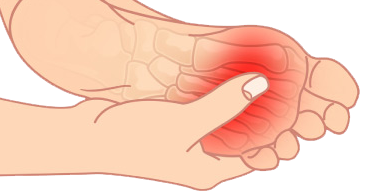
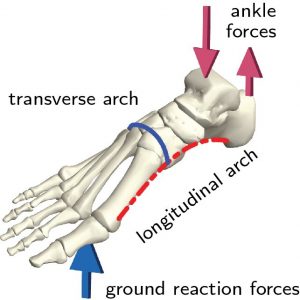
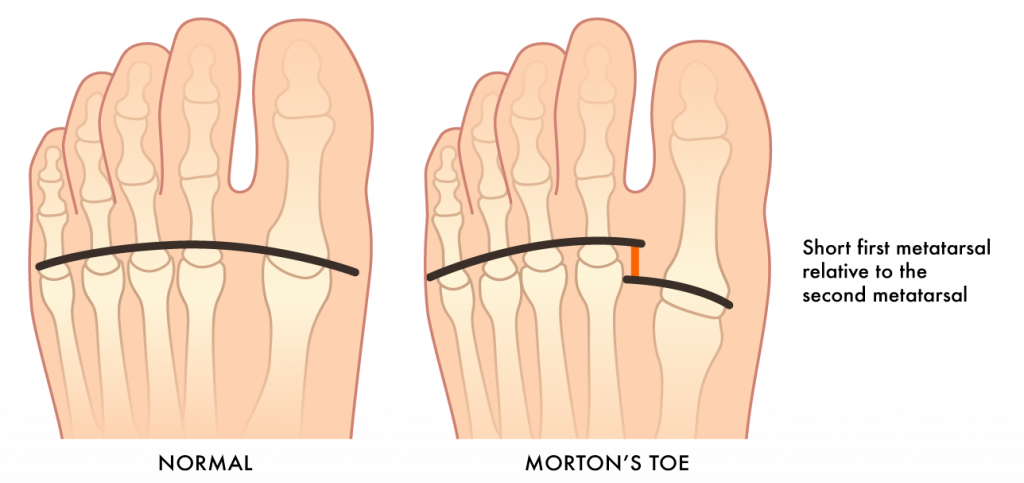
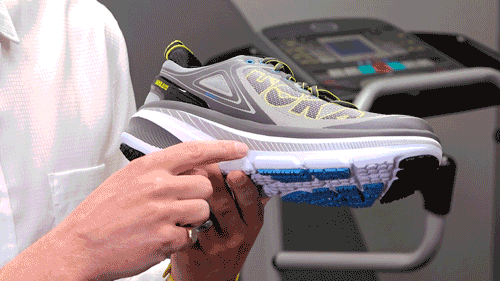
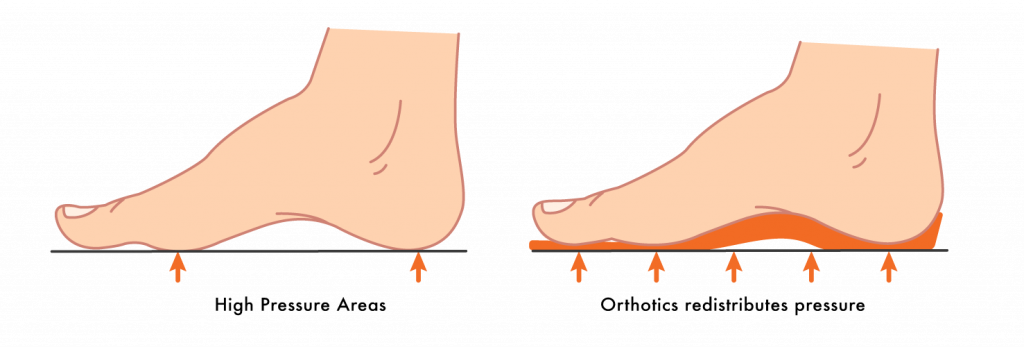
Freda brown
June 23, 2020 at 1:08 amI have mortonsneuron an mortontoe I wear hoka bondi 6 wide which I get from your online store I also wear an orthotic in it I had to get my doctor to fix my orthotic as it caused my top of the foot to be to tight across the front now I have lost some of my metemersol padding to do this I hope that this works okay as I love hoka cushioning and can’t find another wide and better shoe any suggestions would be grateful
Michael Ryan - Director of R&D
June 23, 2020 at 5:14 pmHi Freda – I appreciate your issue with forefoot pain and still wanting to use the Bondi 6 shoe. I’d suggest booking a free 15-minute phone consult (https://kintec.net/appointment-booking/) to give us some more information that will allow us to help you better. Take care